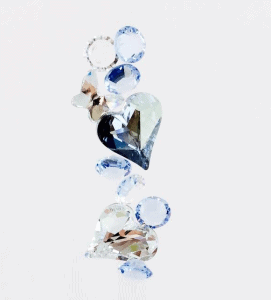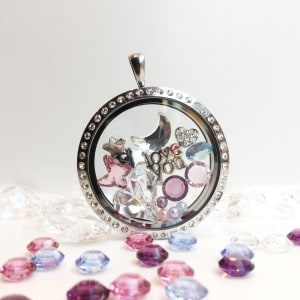Swarovski Crystals
A dictionary definition of the word ‘crystal’ usually leaves you more confused than when you first started, “a piece of a homogeneous solid substance having a natural geometrically regular form with symmetrically arranged plane faces”. Putting all that big-word geology stuff aside, there are many types of naturally occurring crystals in nature, including table salt, snowflakes and precious minerals like rose quartz. A Swarovski crystal, on the other hand, is a totally different story.
Understanding Crystals
Swarovski Crystals are a special type of lead-infused crystal glass, a material that is not found naturally and needs to be man made. Once the crystal glass is produced, it is cut, ground and faceted to produce the crystals used in jewellery, chandeliers, fine crockery, optical instruments, watches, etc.
Many companies produce crystals; what has distinguished Swarovski crystals for the last century, however, is the superior quality of their crystals. The luminescence, clarity and breath taking beauty of a Swarovski crystal is the product of several advances in crystal making technology that Swarovski’s founder established when he started producing the crystals at the turn of the nineteenth century.
The Essence of Swarovski Crystals
In 1891 Daniel Swarovski had a vision – he knew that women loved diamonds, but perfectly formed diamonds were very expensive and extremely rare. In fact, earlier this year, the ‘perfect’ diamond sold for over US $22 million, you can read about it here
Anyway, Daniel wanted to create a man-made flawless diamond type crystal, indistinguishable from the real thing, at a fraction of the price, and far more readily available.
The method used in the creation of Swarovski crystals today is similar to the innovative methods that Daniel Swarovski employed when he started producing the crystals at the end of the nineteenth century. Daniel Swarovski’s father owned a glass cutting factory where Daniel learned the intricacies of working with glass.
As a young man, Daniel visited exhibitions in Germany that showed the public the benefits of electricity, and was inspired to create a new method for cutting crystals that involved electricity. In 1892, he started to apply for patents for the new electrical cutting machine he made. The methods employed by this machine replicated and surpassed laborious non-mechanized processes carried out by glass cutters.
With this new innovative method under his belt, Daniel eventually set up a factory in Wattens, Austria, in 1913 with two other co-founders. The reason the factory came so long after Daniel had perfected his cutting method was because he wanted to ensure that the Swarovski’s company’s cutting and polishing methods were the best in the world.
The same dedication to perfection and quality can be seen in the Swarovski Company today, an enterprise that employs over 20,000 people all over the world. Regardless of the product – whether it be crystals for jewellery, figurines, furnishing, tableware, optical instruments of watched—Swarovski ensures that every piece produced is flawless. The company also maintains its spirit of innovation and has consistently been at the helm of breakthroughs in the crystal glass industry.
Owning a Swarovski crystal isn’t just having a nice piece of jewellery, it’s possessing an indescribably beautiful piece of engineered, innovative and sophisticated design. It’s also being a part of a century-long tradition of perfection and excellence. Purchase your own Swarovski crystal today at LocketInn, from our collection of beautiful crystal lockets.
Today the company is still run by family members and has two separate businesses – one manufactures loose elements and the other creates design-driven finished products, including precision-cut genuine gemstones and created stones.
LocketInn is very proud to have selected genuine Swarovski products, you can see the range here








